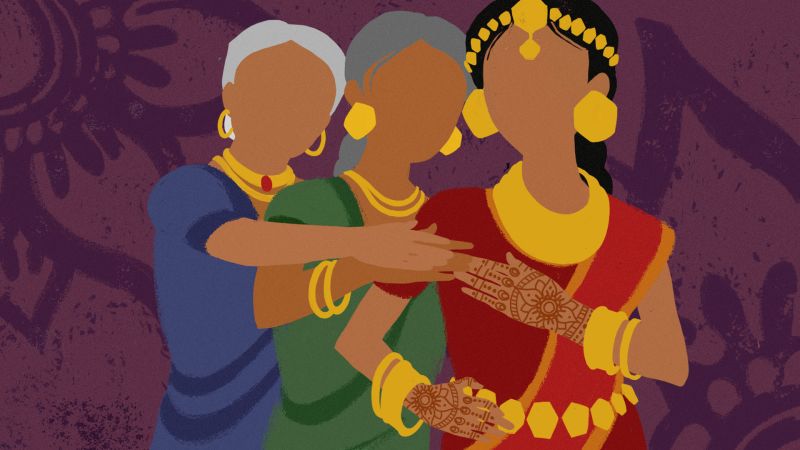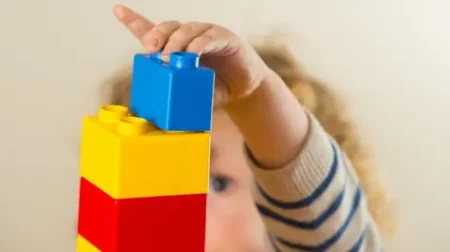Gold is often referred to as the ‘eternal metal,’ and for many families across South Asia, it carries far more significance than just its monetary value. One individual who embodies this tradition is Farzana Ghani, a 56-year-old resident from Miami, Florida. Each piece of gold jewelry she possesses tells a story. For instance, she owns a delicate set inherited from her mother-in-law, given on the occasion of her wedding in Pakistan. She also possesses a gold chain that was a heartfelt gift from her mother following her performance of Hajj, the Islamic pilgrimage, and some precious gold coins that mark the celebration of her daughter’s birth. With gold prices hitting unprecedented highs, Ghani is even more motivated to continue investing in this cherished metal. “Compared to bonds and holding cash, I would still prefer to buy gold coins,” she emphasizes.
The cultural significance of gold in South Asian weddings is profound. Brides are known to adorn themselves in intricate gold jewelry during their nuptials. This tradition, laden with meaning, begins long before the bride is born, with families often gifting gold to commemorate significant life events. The practice of passing down gold from mothers to daughters is a well-rooted tradition across the continent, transcending socioeconomic barriers, and serving as a means to ensure financial security.
In South Asia, the appreciation for gold goes beyond being an investment; it is intertwined with cultural identity. Many women inherit saris embellished with gold thread, treating heirloom pieces as sacred rather than viewing them as liquidable assets. In a society where women may have limited financial autonomy, jewelry can symbolize one of the few assets that they can claim as their own.
In the backdrop of a fluctuating global economy, the market for gold has seen remarkable fluctuations itself. Throughout 2023, the price of gold surged by 26%, following a 27% increase the previous year. This uptick can be attributed to multiple factors, including the unpredictable nature of President Donald Trump’s tariff policies. In light of this, many women in South Asia, who have historically devoted their assets to gold investments, are finding their choices validated as the prices rise.
On social media platforms like TikTok, South Asian women are showcasing their gold investments, with one mother sharing her journey of purchasing a 24-carat necklace nearly three decades ago. Back then, gold’s cost was relatively moderate at approximately $12 per gram, a stark contrast to its current price of around $100 per gram.
India stands out as the world’s second-largest consumer of gold jewelry, trailing only China. According to the World Gold Council, Indians acquired a staggering 611 tons of gold jewelry in 2021 alone. The country is projected to see upwards of 11 to 13 million weddings annually, with bridal jewelry constituting more than half of the gold market share. This is reflected in the surge of South Asian clients among UK gold suppliers, indicating a potential shift where more young women of South Asian descent are actively investing in gold.
Joseph Cavatoni, a senior market strategist at the World Gold Council, elaborates on the dual role of jewelry in these communities. “Jewelry holds an auspicious place in people’s lives. It serves a consumer-oriented purpose yet functions as a robust medium for saving and passing wealth down through generations,” he explains. There is a shared belief among Indians that gold isn’t merely a luxury but an appreciating family asset, with Sachin Jain, CEO of the World Gold Council in India, noting that even in economically challenging times, individuals view gold as a potentially safe form of value.
The preference for gold speaks volumes, particularly in regions where millions, especially women, may lack access to banks or organized investment options. Remarkably, less than half of women in India reportedly manage their finances independently. Viewing that as a concern, many families hold on to their gold, perceiving it as a reliable shelter during trying times, a stark contrast to Western markets where gold is primarily viewed as a risk-off asset.
South Asians have a long-standing tradition of keeping gold at home; estimates suggest over 25,000 tons might be stashed in households across India alone. However, rather than seeking to sell their gold, families are incorporating more contemporary designs suited for everyday wear, reflecting a generational shift.
Ghani illustrates this evolving tradition in her familial practices. When it came time for her daughter to marry, Ghani chose to modernize her existing gold pieces into a collection that her daughter could wear and one that could be passed down to future generations. Despite her daughter’s inclination towards artificial jewelry, Ghani stood firm, advocating for the elegance and symbolism associated with gold.
Finally, it’s essential to underline the cultural significance that gold encapsulates for South Asians. While it continues to serve as a practical financial asset, it also represents a legacy of heritage, familial bonds, and cultural identity that transcends generations.








